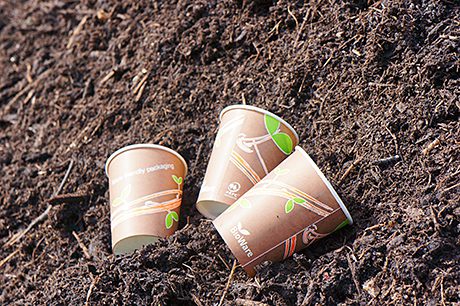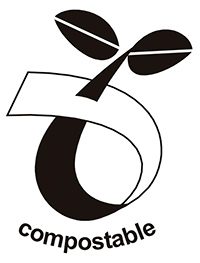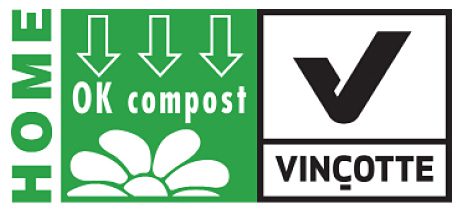Envirotec looks at the latest progress

MORE and more product packaging is being recycled each year but a lot of it still goes to landfill, particularly where plastics are present.
In 2008 it made up around 5% of all UK waste sent to landfill. The possibility that more of this waste can be recovered and converted into environmentally benign or useful by-products is motivating efforts to develop new kinds of packaging and an associated waste management infrastructure.
Where packaging is concerned, compostability is now one of the principal sustainability strategies being pursued in the UK, alongside WRAP’s Courtauld Commitment. Compostability is a characteristic of an object that allows it to biodegrade under certain specific conditions. While all kinds of materials will biodegrade (in other words, break down into soluble products under the influence of micro-organisms), the term is often used without reference to the conditions or timescale required. In other words, a wooden table is biodegradeable but you wouldn’t expect it to break down in this fashion anytime soon.

Biodegradeable bugbears
The website of the Biodegradeable Product’s Institute (BPI) explains that some materials with this designation take a long time to decompose, making them unsuitable for industrial composting. And so-called bio-degradeable plastics can have a poor effect on the recycling of PE plastic waste when the two types of material are mixed, as the latter is mainly produced from oil.
The BPI cites popular myths, such as the idea that such waste will simply biodegrade in landfill. In fact, the dry and oxygen-poor conditions in landfill often cause this waste to mummify rather than decompose. In other circumstances, uncontrolled biodegradation in landfill can cause problems like groundwater pollution and methane emissions.

For a product to be certified as compostable, it has to satisfy the requirement of being biodegradeable under certain controlled conditions, and these conditions are described in standards such as the European standard EN 13432 on industrial composting, widely regarded as a baseline standard for compostability, according to Gordon Thompson of the Organics Recycling Group, a branch of the UK Renewable Energy Association (REA).
Conformance with EN 13432 requires products to satisfy a range of chemical and other tests, including a product’s propensity to disintegrate satisfactorily under certain conditions. And EN 13432 certification is given to an end product rather than a material, as the mechanical properties also affect its ability to degrade.
Building on top of the EN 13432 standard, three other schemes are now recognised for the accreditation of compostable packaging: the DIN Certco Gepruft Industrial Compostable certification scheme, European Bioplastics Seedling Logo scheme and the Vincotte OK Compost scheme. Each of these standards denotes accordance with EN 13432 while also satisfying requirements specific to each. And products certified under these schemes must display an appropriate logo and certification number.
Products can be certified as suitable for home composting or industrial composting, with different certification schemes in use. For example, home compostable certification can be achieved through Vincotte’s “OK Compost Home” scheme (pictured, above).
So far, the largest market sector for compostable packaging is bags for the collection of food and other organic waste, for lining waste bins. But in the food packaging arena, a number of companies are now offering products for which varying claims are made for compostability.
Much of the impetus to develop an infrastructure for compostability has been driven by the regulations governing food waste, according to Thompson. For example, north of the border the Waste Scotland regulations are mandating the separate collection and treatment of food waste, with all businesses producing over 50kg of food waste requiring a separate collection for it by January 2014. This in turn is promoting the use of compostable packaging as it can be collected alongside food waste.
Where to compost?
While this seems to be a step in the right direction, there is still a need to develop the composting infrastructure for packaging. AD plants tend to remove all packaging and are therefore not necessarily a good target for composting it. Thompson said there are a number of large In-Vessel Composting (IVC) facilities around the country that will accept compostable packaging but “due to the ABP regulations it is unlikely that compostable packaging will ever be sent to an open windrow site”.
In the UK, the number of organics recyclers doesn’t seem to have noticeably increased in recent years but according to Thompson “the facilities are getting more sophisticated and generally larger so they are treating more organic material.”
In terms of the actual materials being used for food packaging, a number of companies are developing packaging concepts based around bio-plastics (such as poly-lactic acid), plant starch and sugar bagasse. Some of these materials have particularly favourable properties for certain applications. For example, plant starch has the advantage of being heat resistant. Other materials include recycled paper and the compostable cellophane Natureflex developed by Innovia Films.
Different combinations of these materials are used to assemble products that can be deemed compostable, with varying degrees of certification being achieved. London Bio-Packaging claims to be the only company that meets EN 13432 while also being independently certified by WRAP, with whom it underwent an extensive process to allow its food containers to be used at the 2012 London Olympics (the waste being treated by Country Style in Kent). Edinburgh-based Vegware produces ‘eco-catering’ wine glasses and cutlery certified under the Vincotte OK Compost scheme (which includes certification to EN 13432).
Working together
Since waste management is in most cases a local or regional task, the effort to make recyclable and compostable packaging a reality relies on the co-operation of a large number of stakeholders, including raw material developers, product developers, local plastics recyclers, municipal waste collectors and biowaste treatment plants.
With respect to organic recycling, Switzerland claims to have become the first country to reach an “all-stakeholder consensus” regarding the treatment of biodegradable materials (including biodegradable plastics) in waste streams. It includes a restricted acceptance of bio-plastics in biowaste treatment plants. Only bags designed for the collection of bio-waste are allowed without restrictions, while other bio-plastics-based products – like dishes or flower pots – can be composted or fermented if they originate from a defined source or comply with certain forms of certification.
Daniel Trachsel, md of the Association of Swiss Composting and Methanisation Plants, in an interview on the European Bio-plastics website (see http://en.european-bioplastics.org), explains how the consensus was reached, beginning with the formulation of a working group in 2001 and culminating with this latest 2013 consensus which involves “the whole supply chain and the disposal chain”. However, he regrets that the German supermarket chains Aldi and Lidl have not joined.
While at present the consensus is based only a private agreement between the stakeholders, Trachsel says his group is hoping to convince the Swiss legislature to adopt the core issues into a “planned national ordinance”. And if there were to be an attempt to export the approach to the EU it would further ensure the scheme’s survival. “Mainly the fact that products coming from the EU aren’t marked according to the consensus troubles severely the acceptance of the consensus in Switzerland”, he said in the interview.
Attaining a wider consensus seems bogged down at present by the fact that, as Thompson says, “there is still considerable confusion over what compostable packaging actually is”. He concludes that more incentives may be needed to faciliate it, to make it more than simply a matter of corporate social responsibility.






